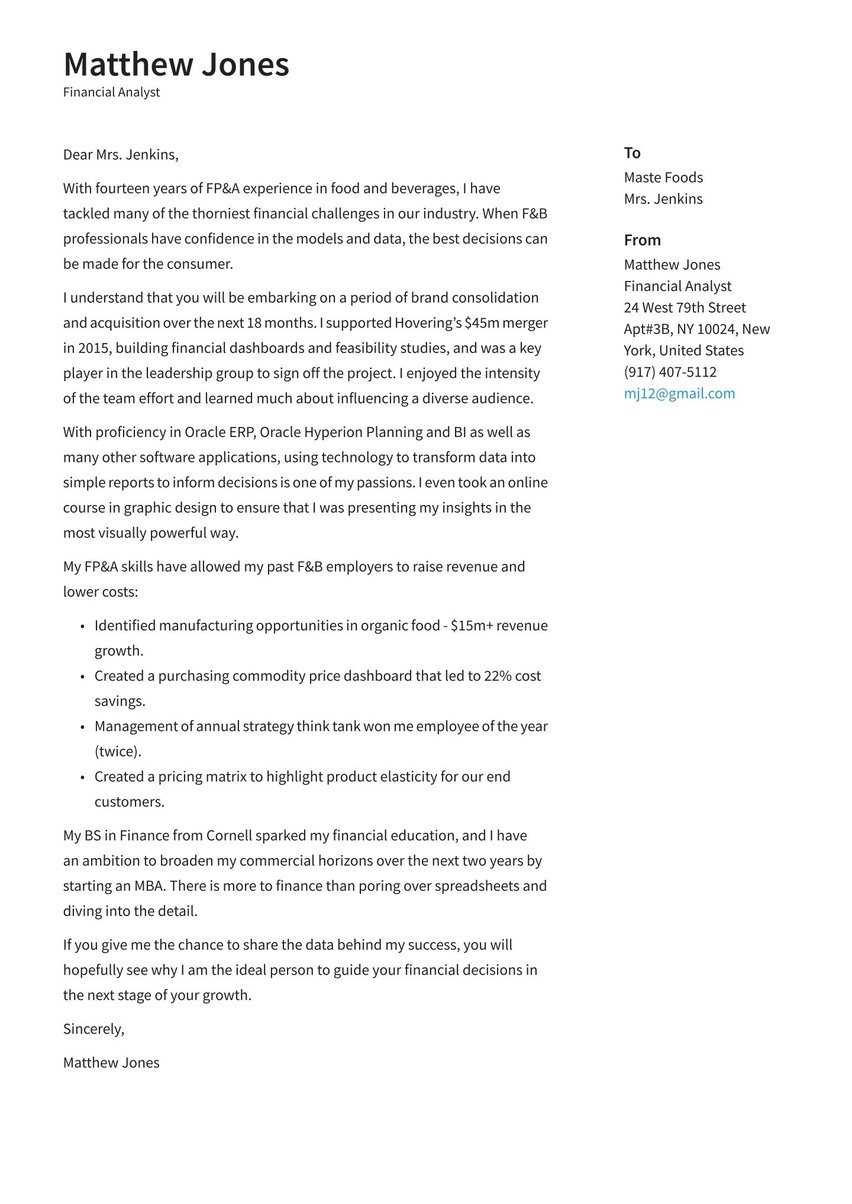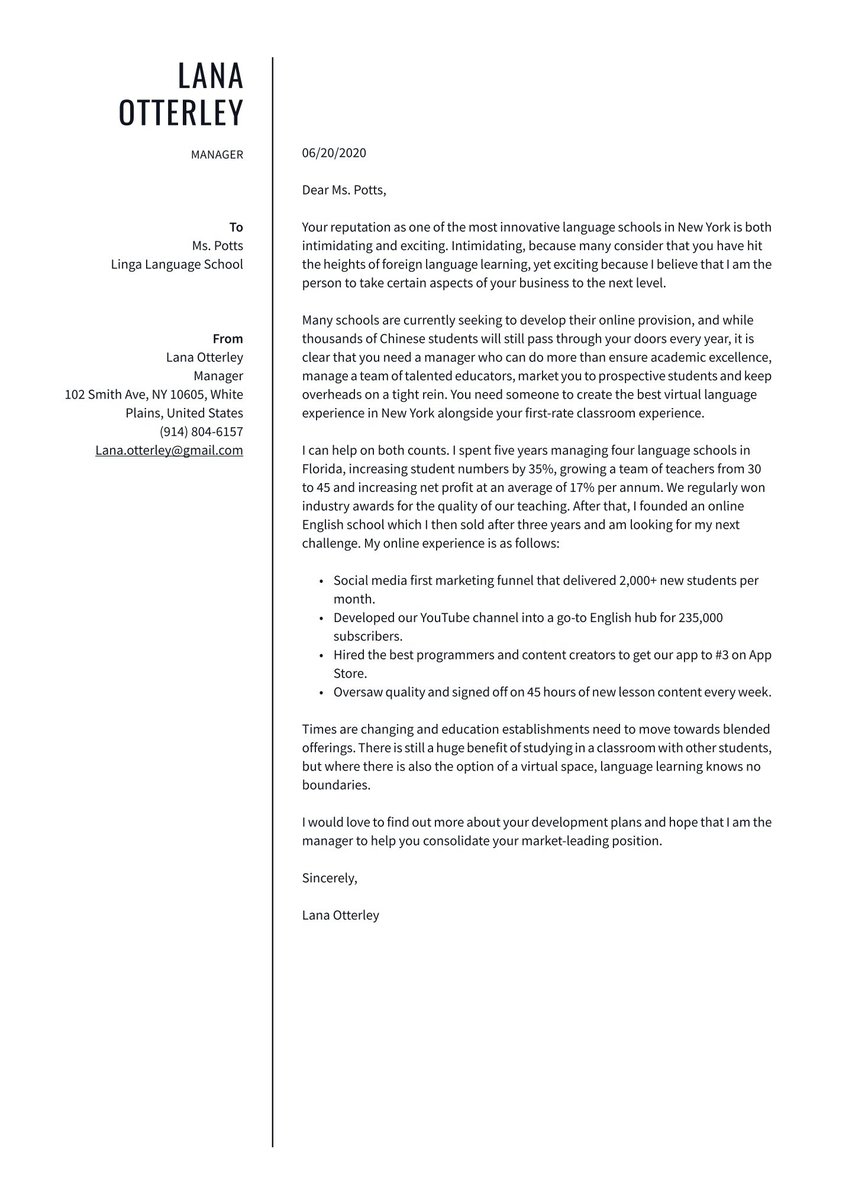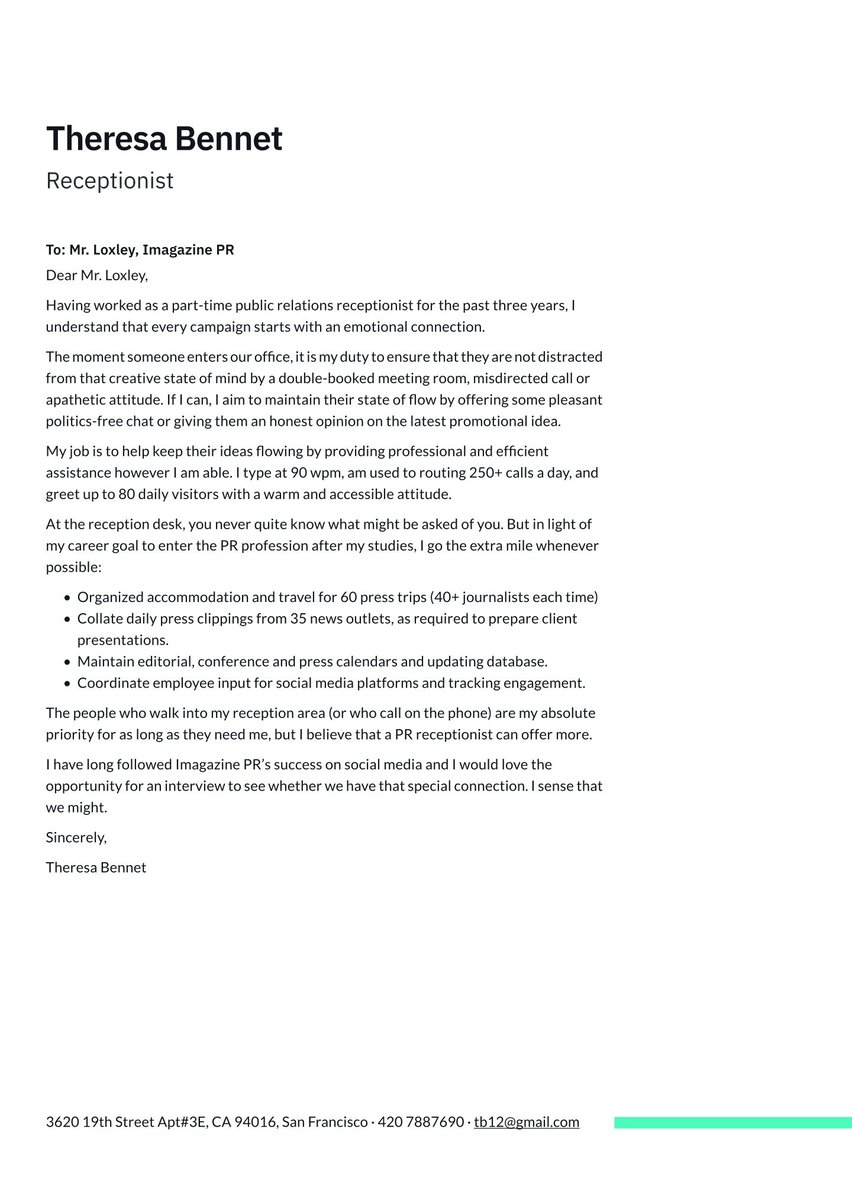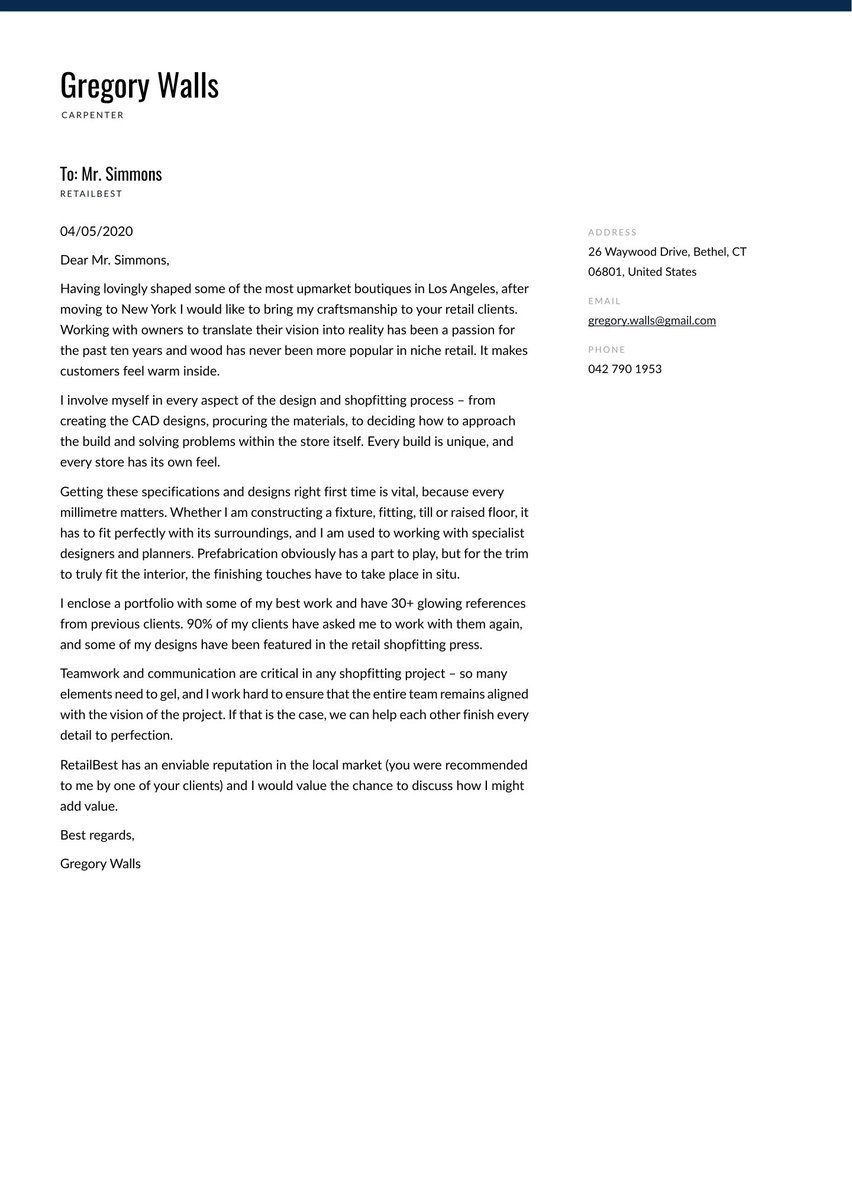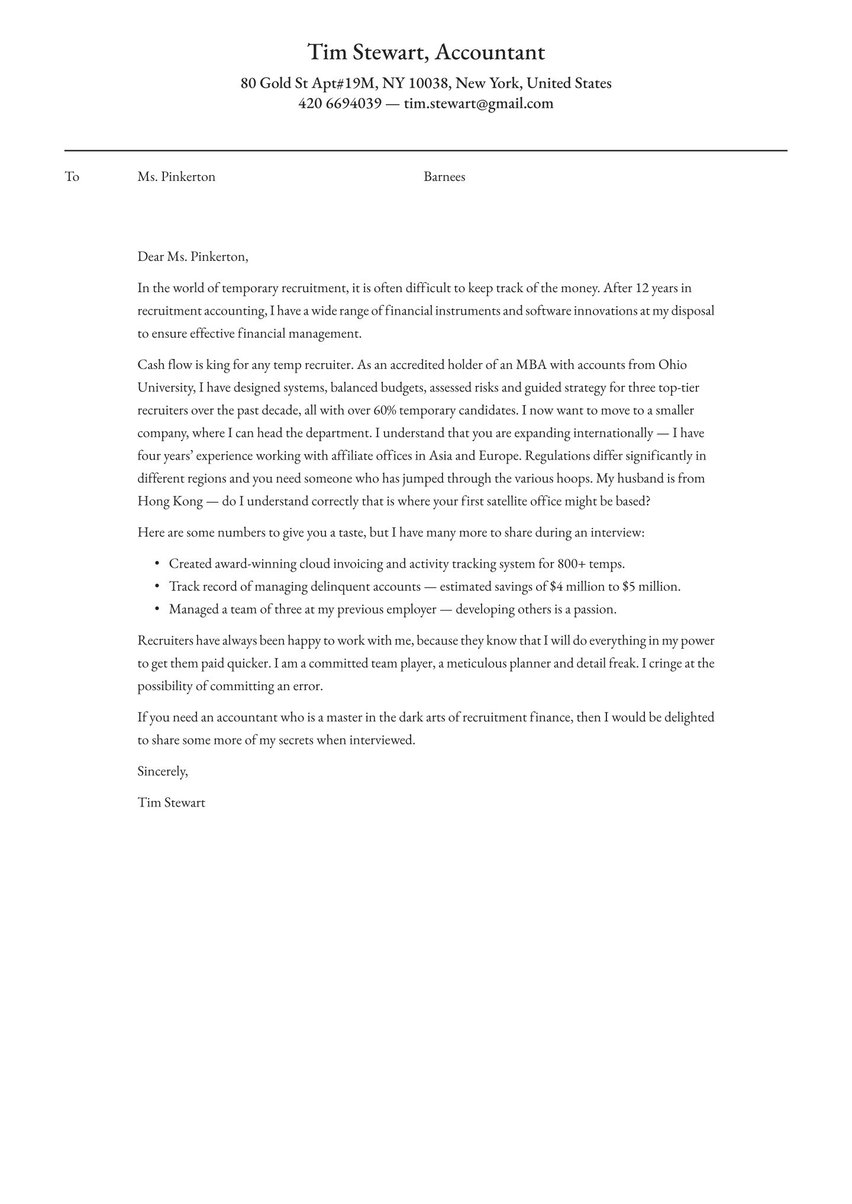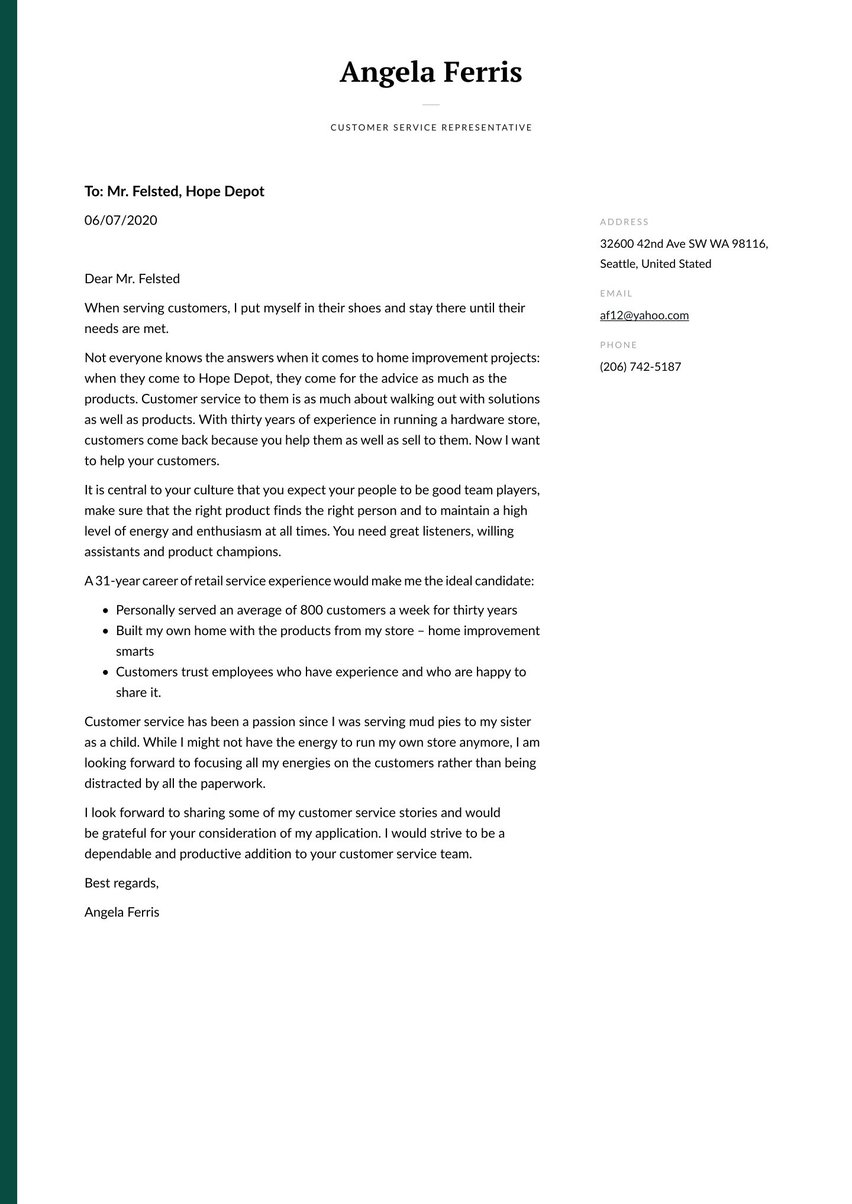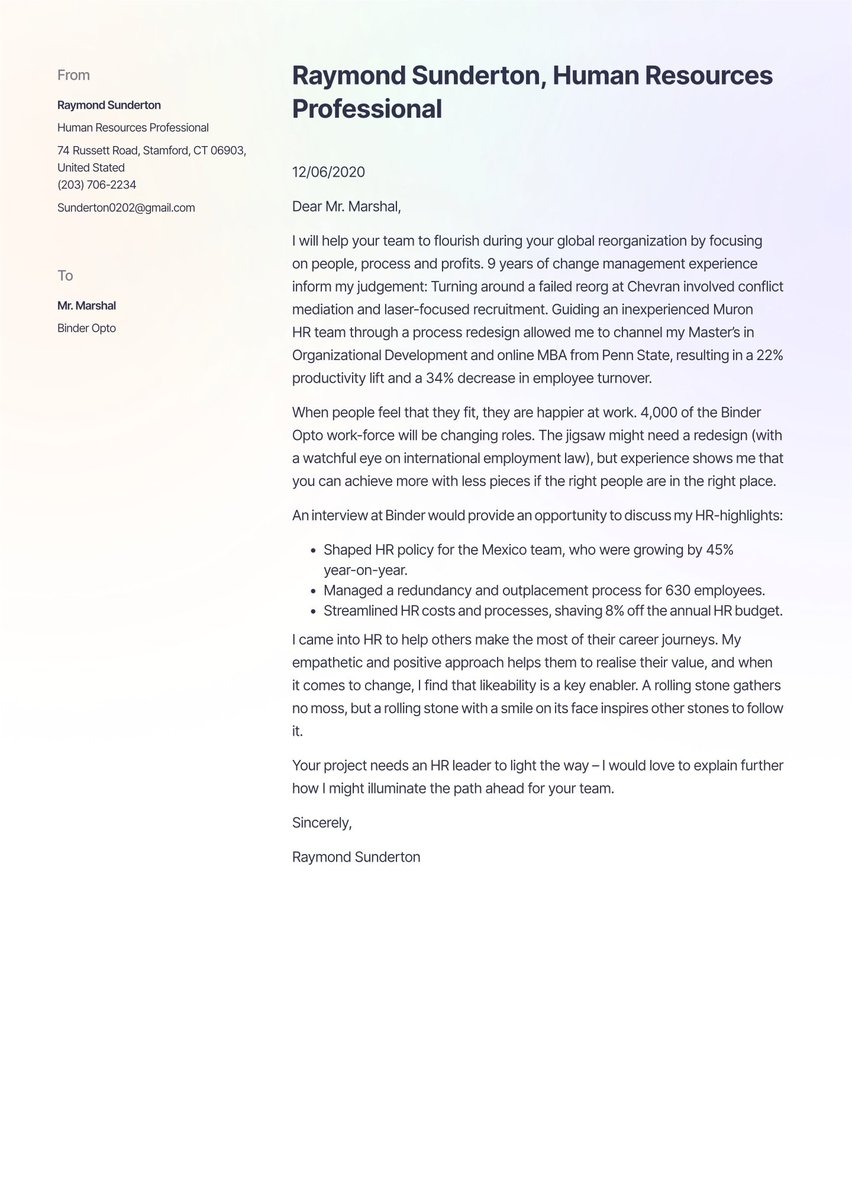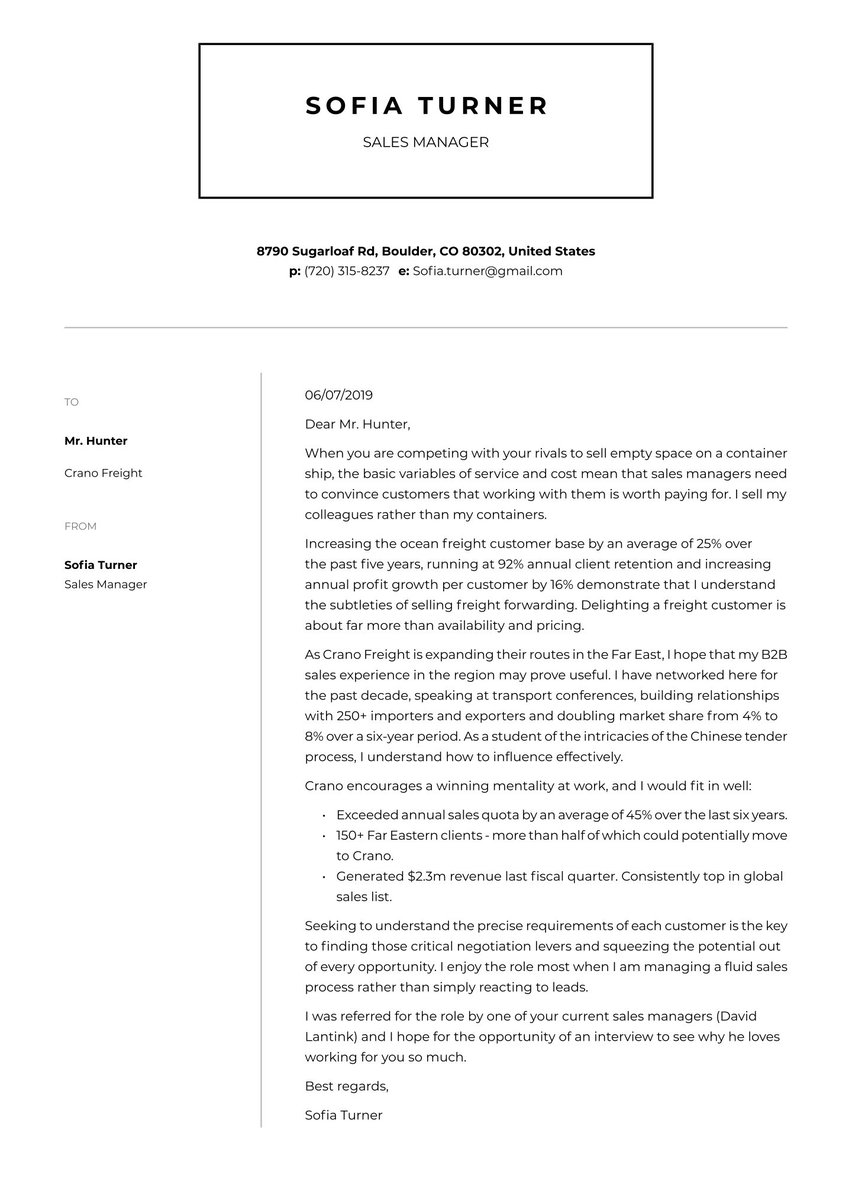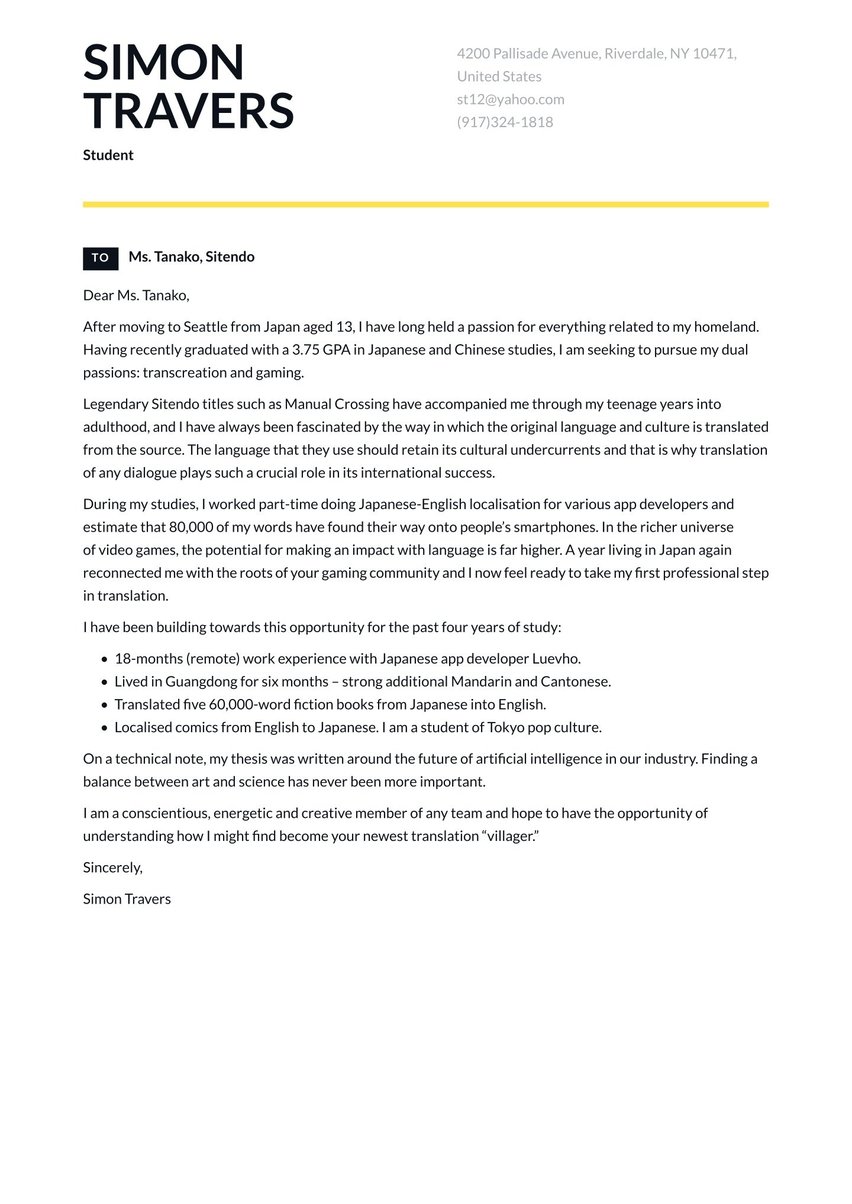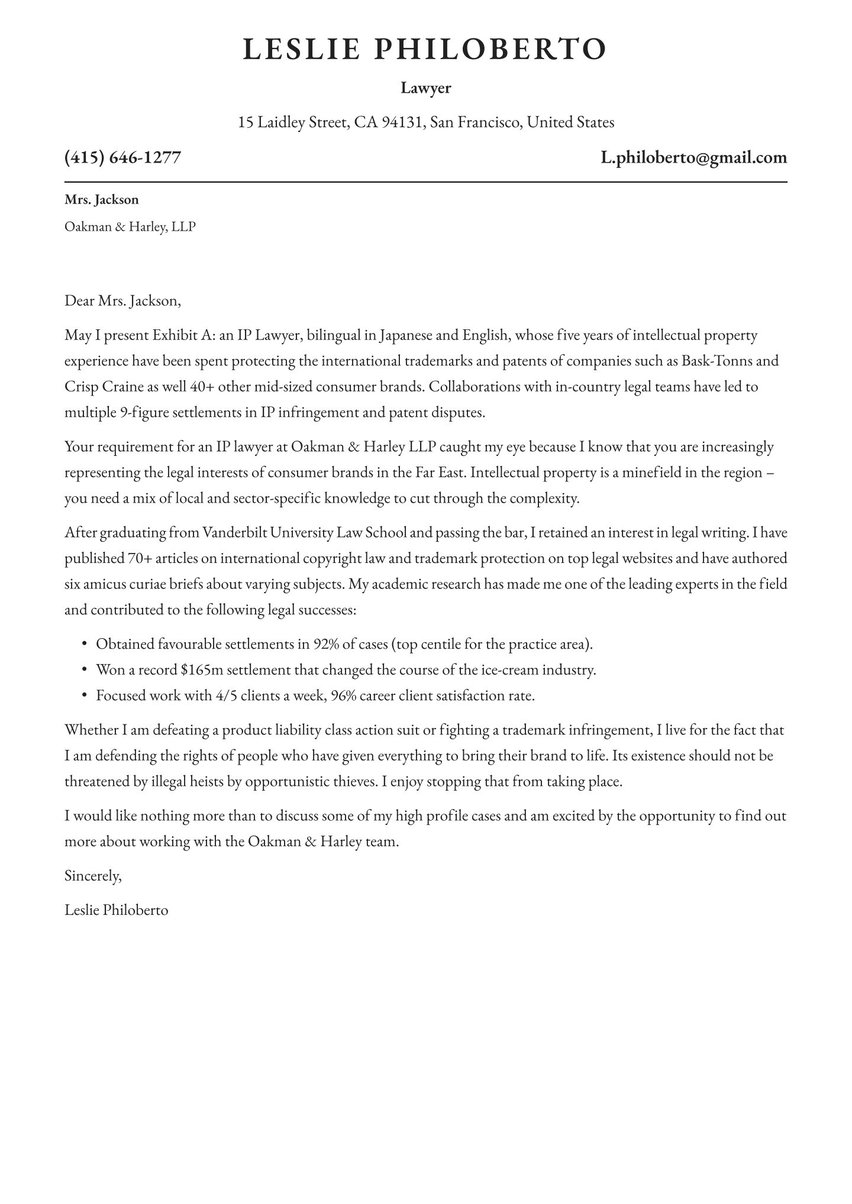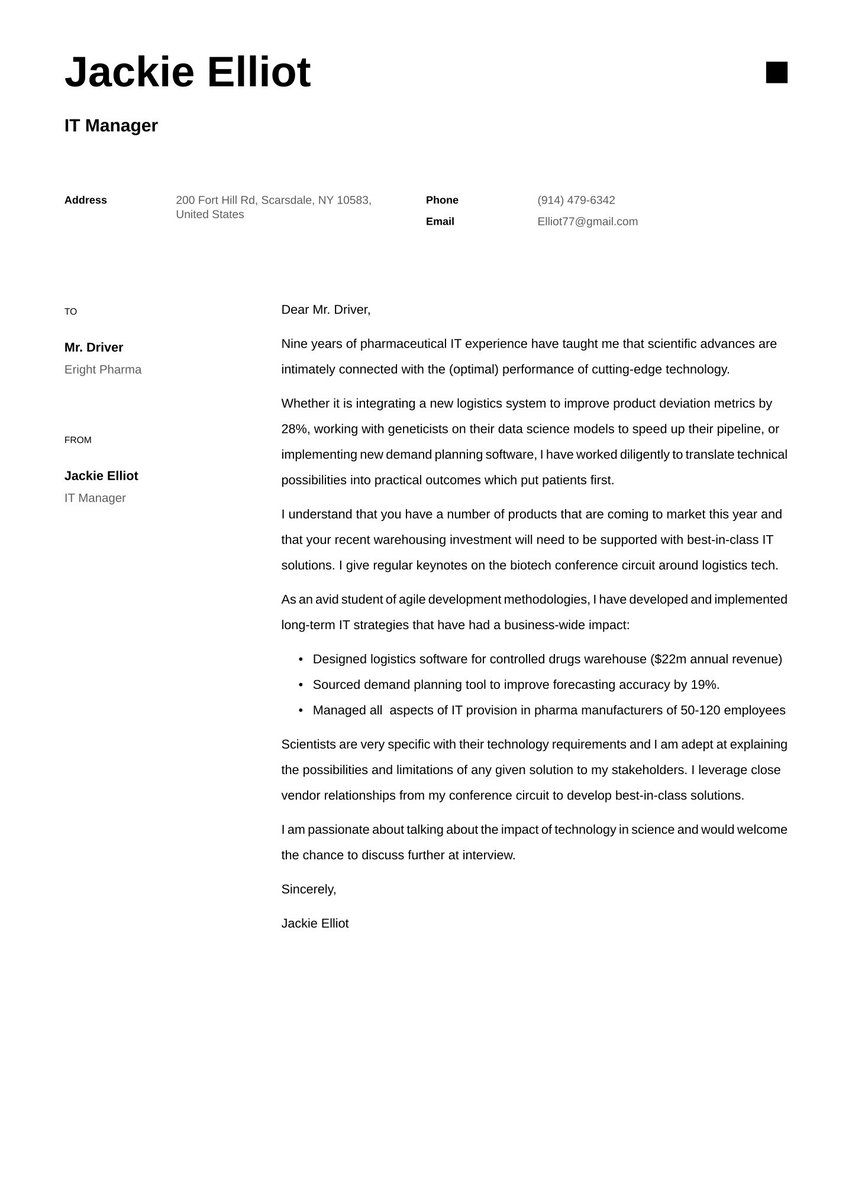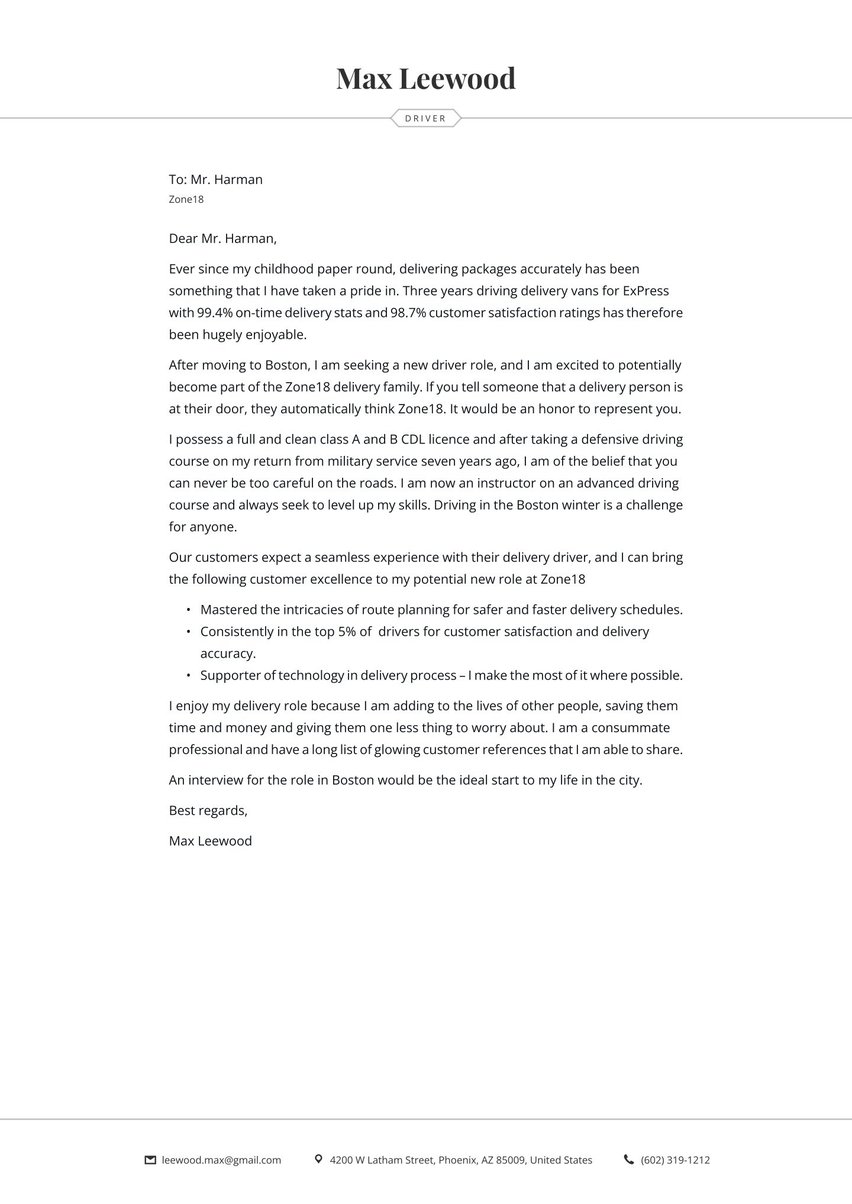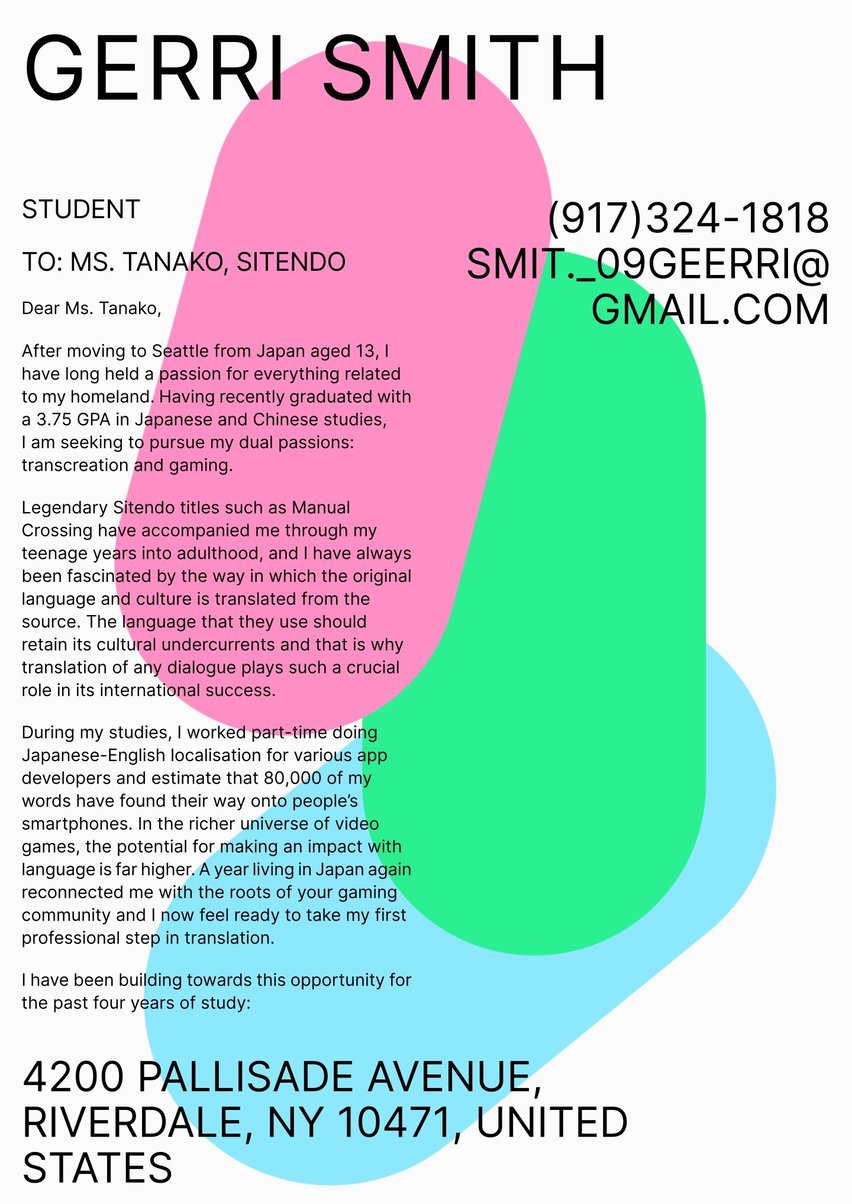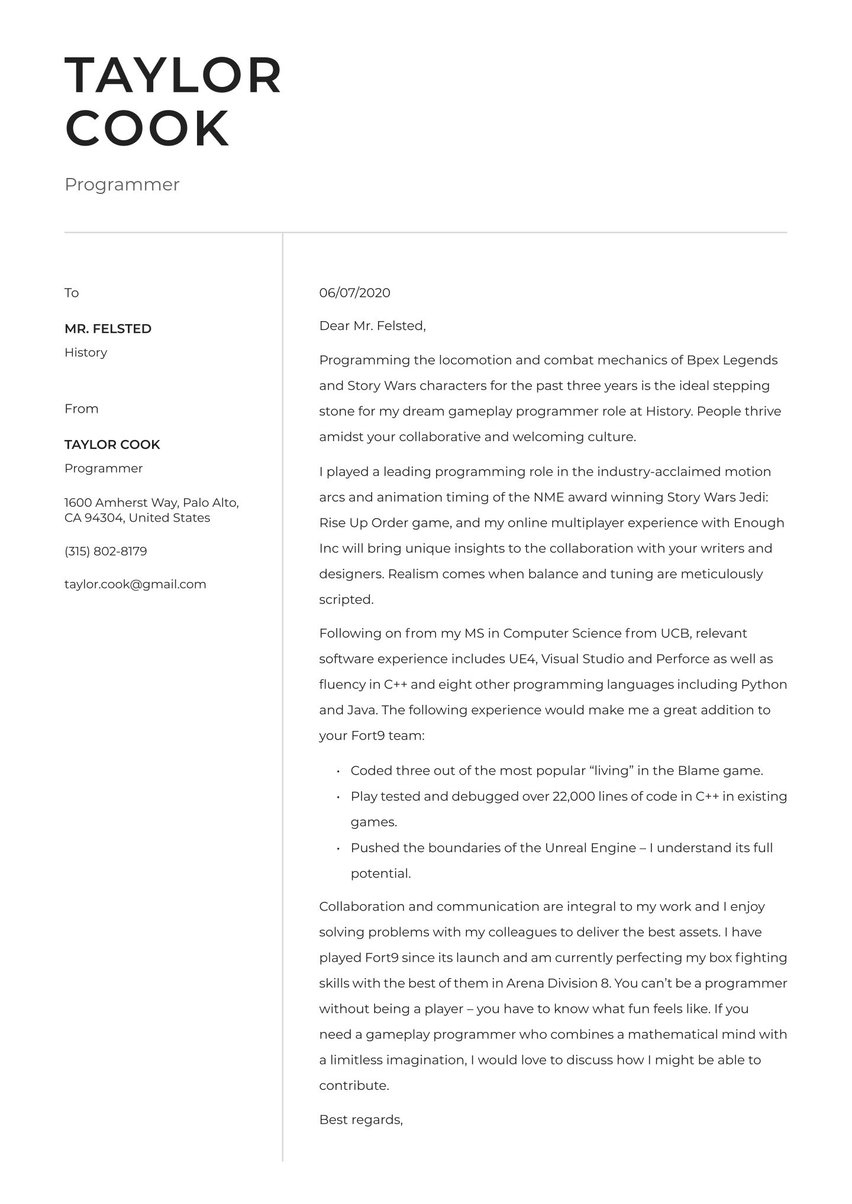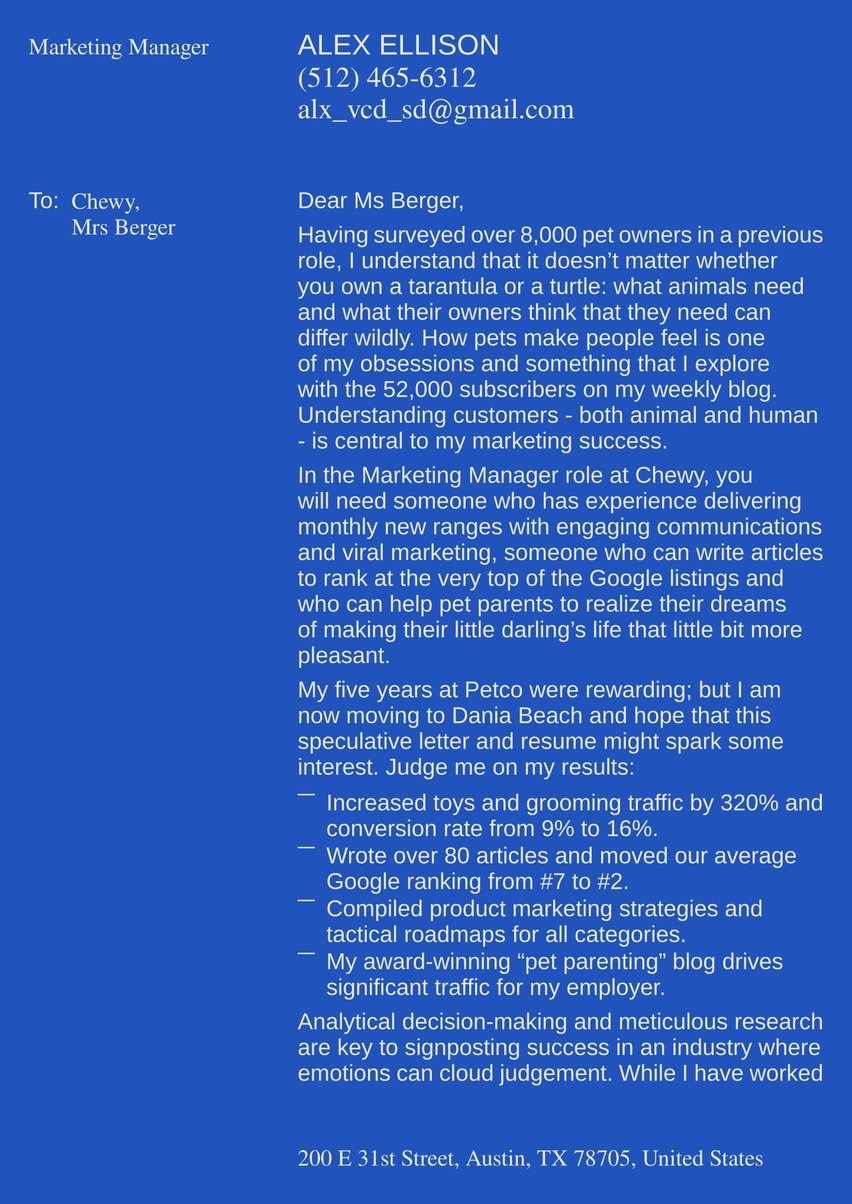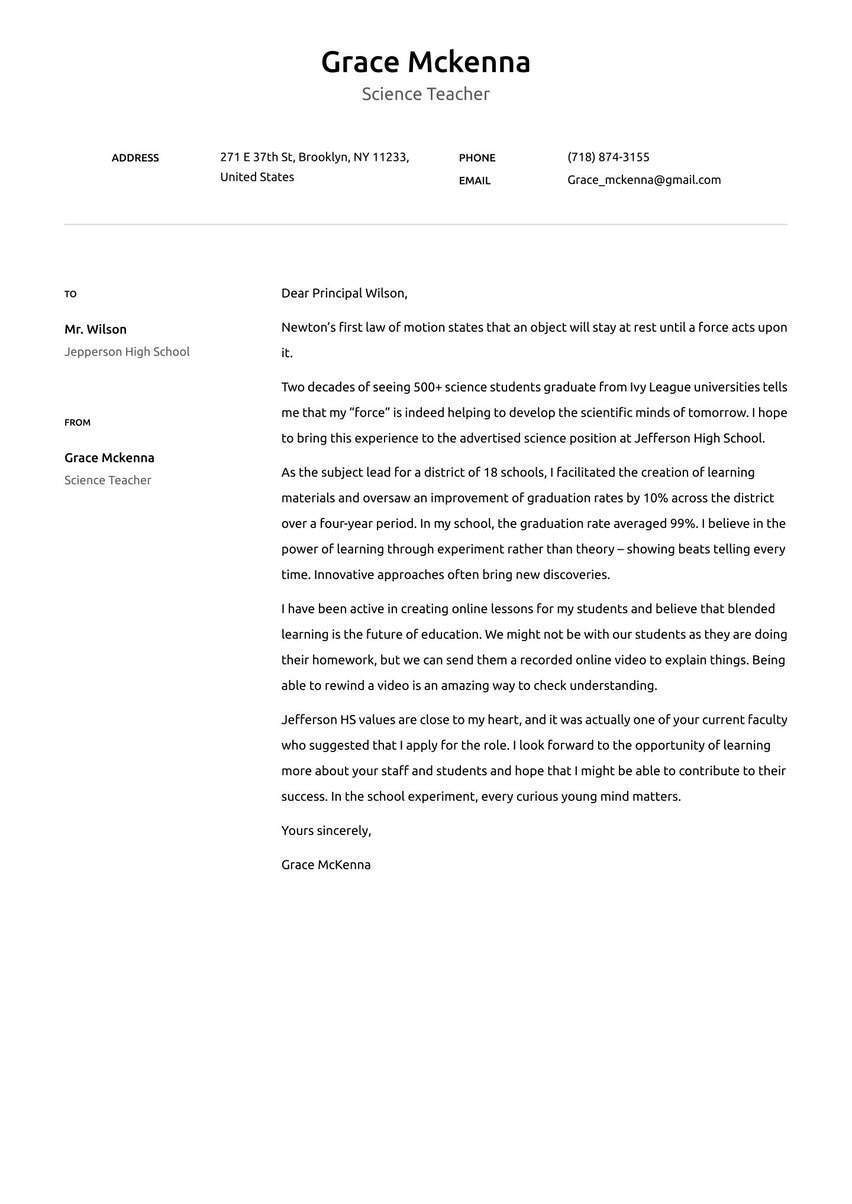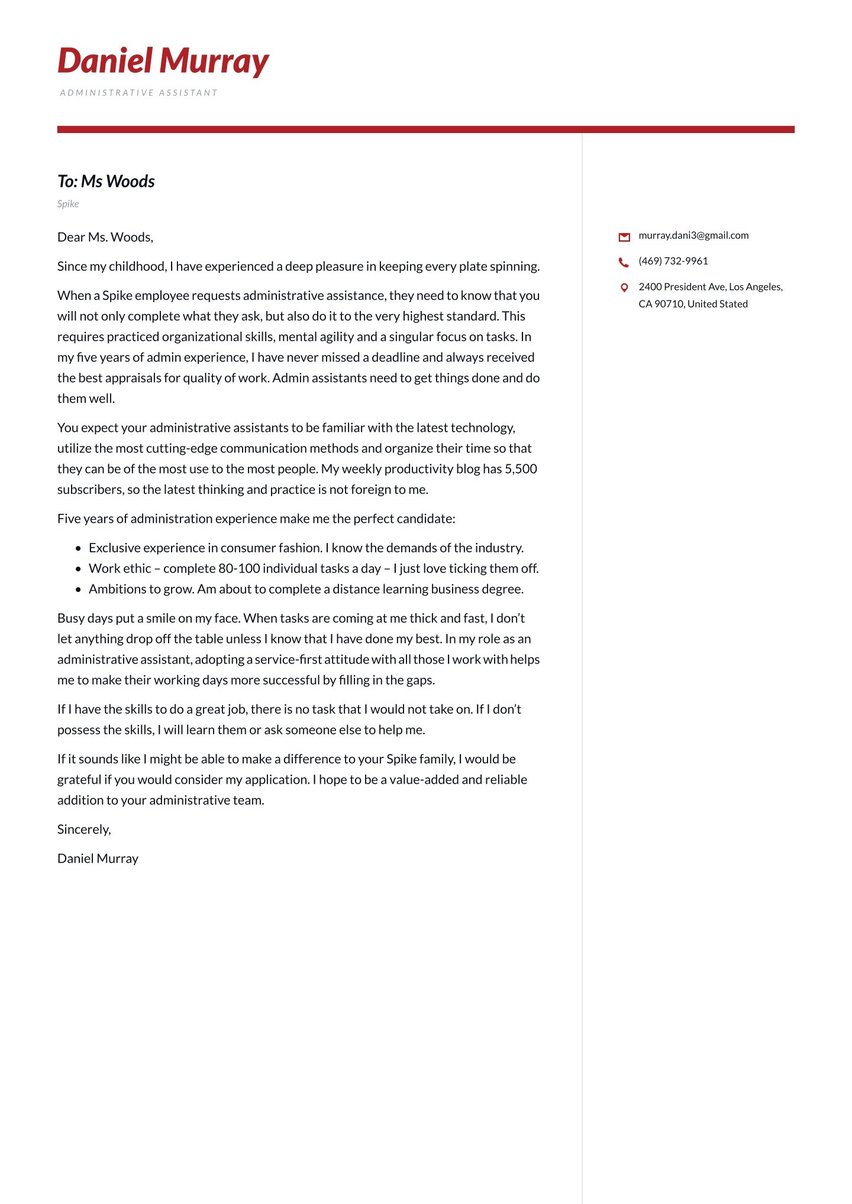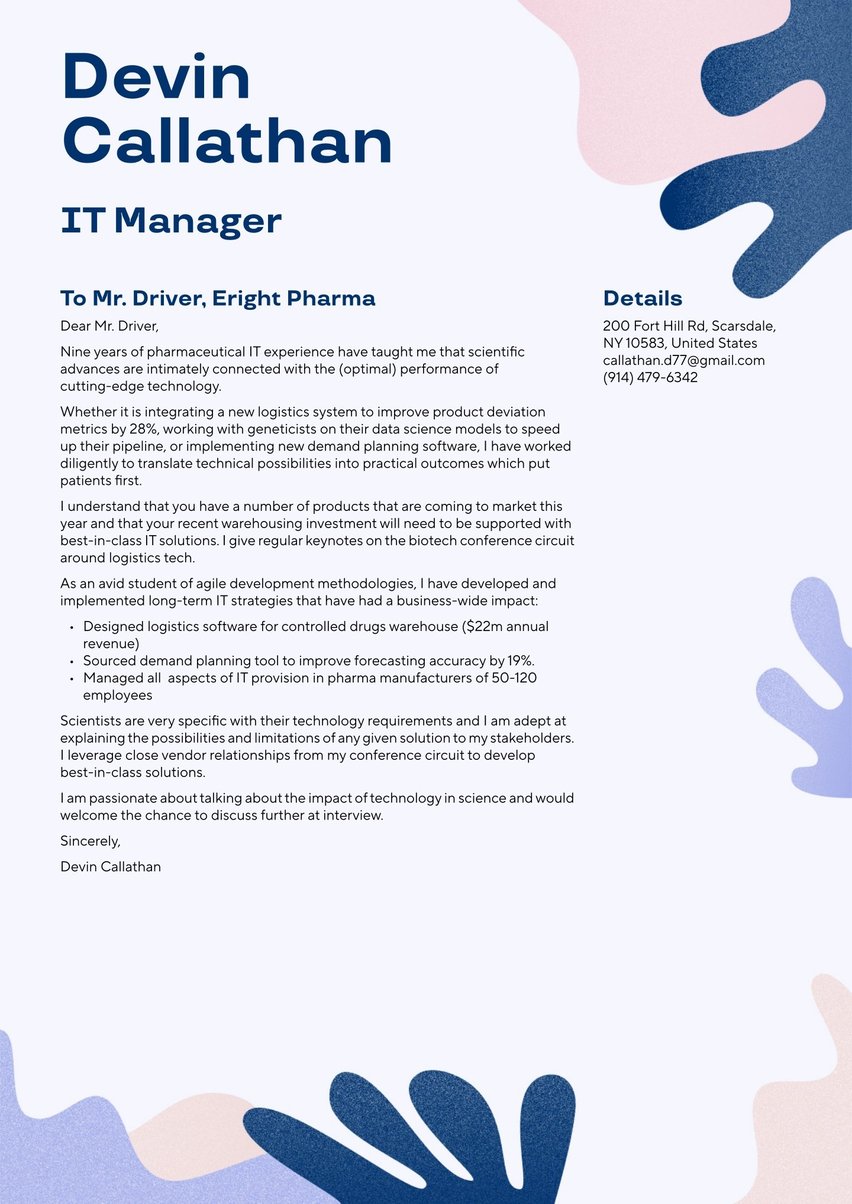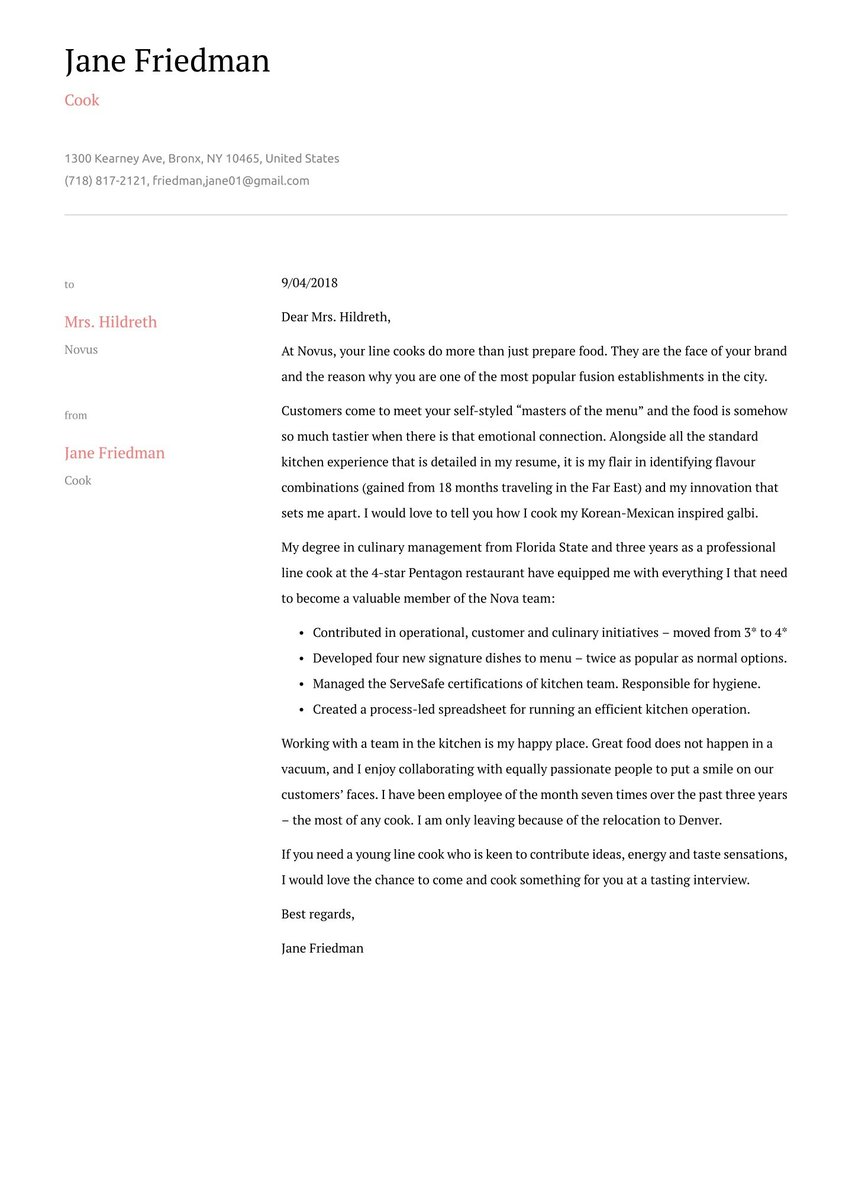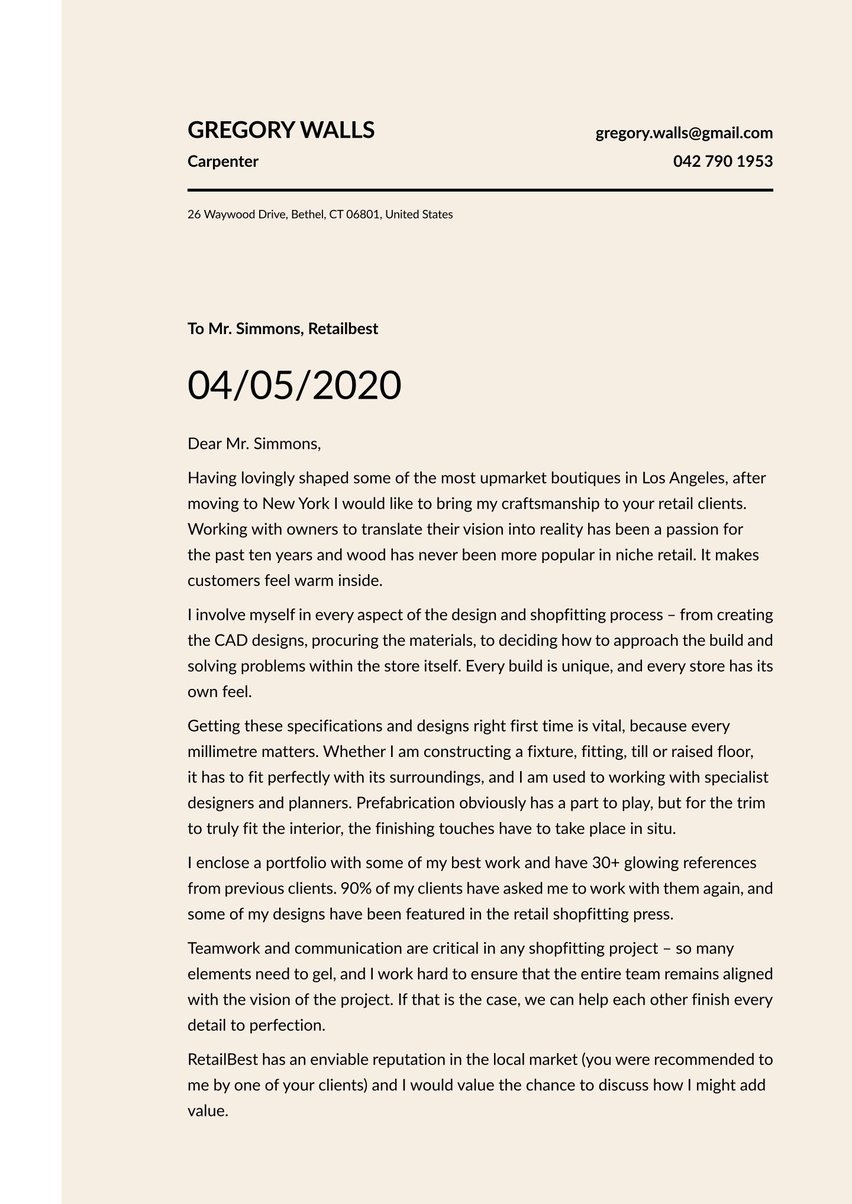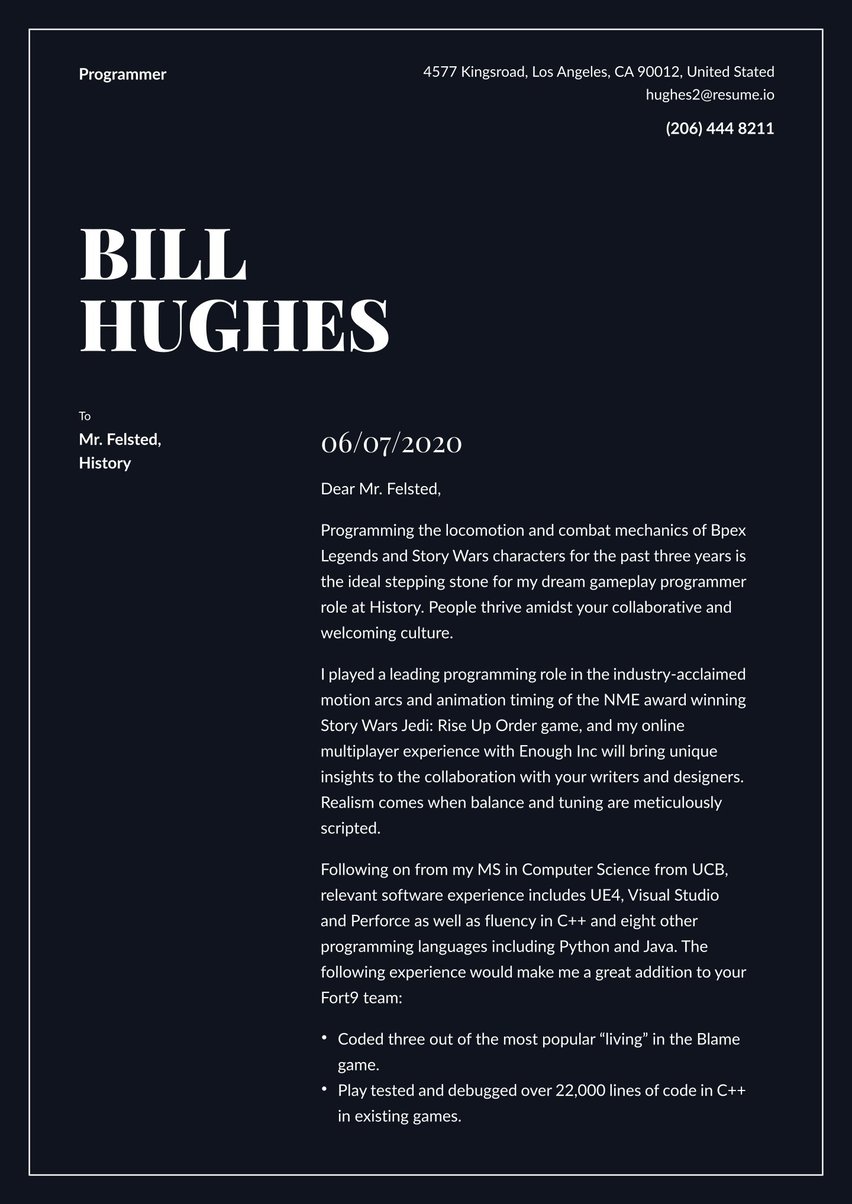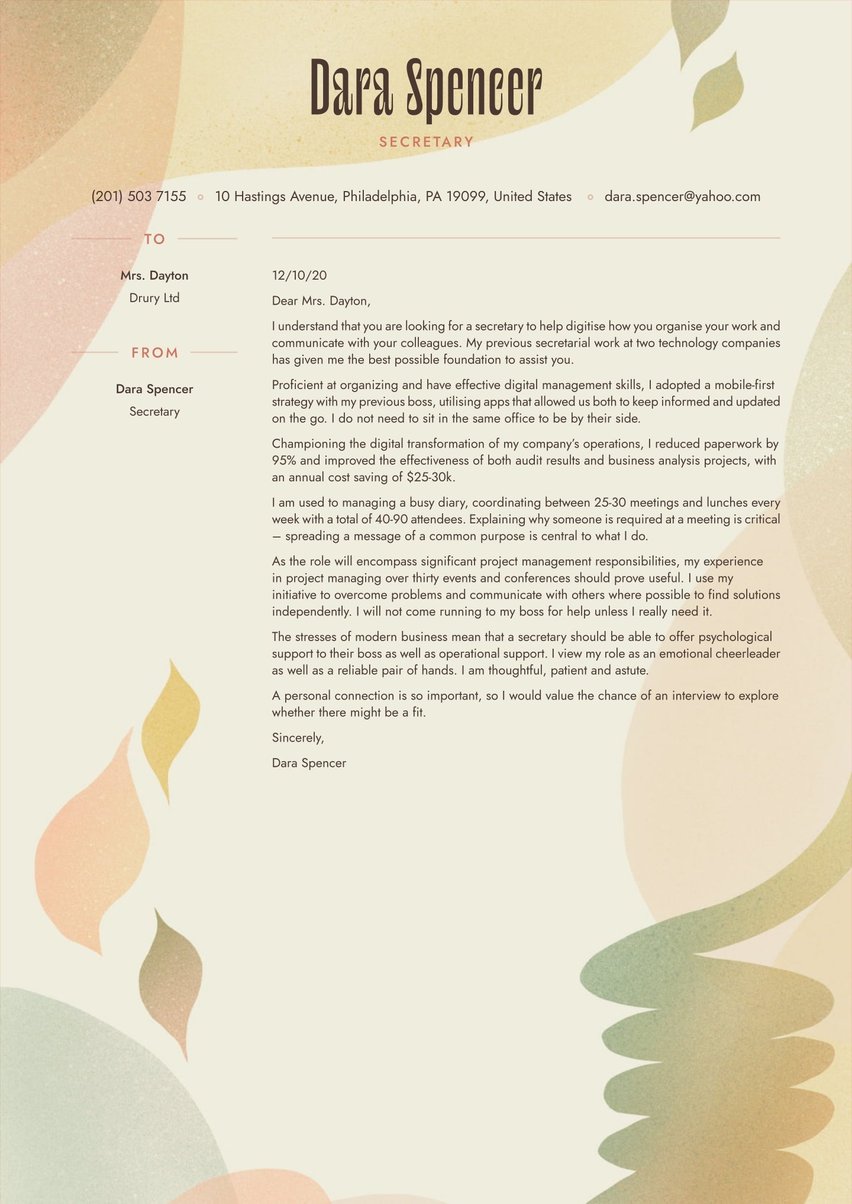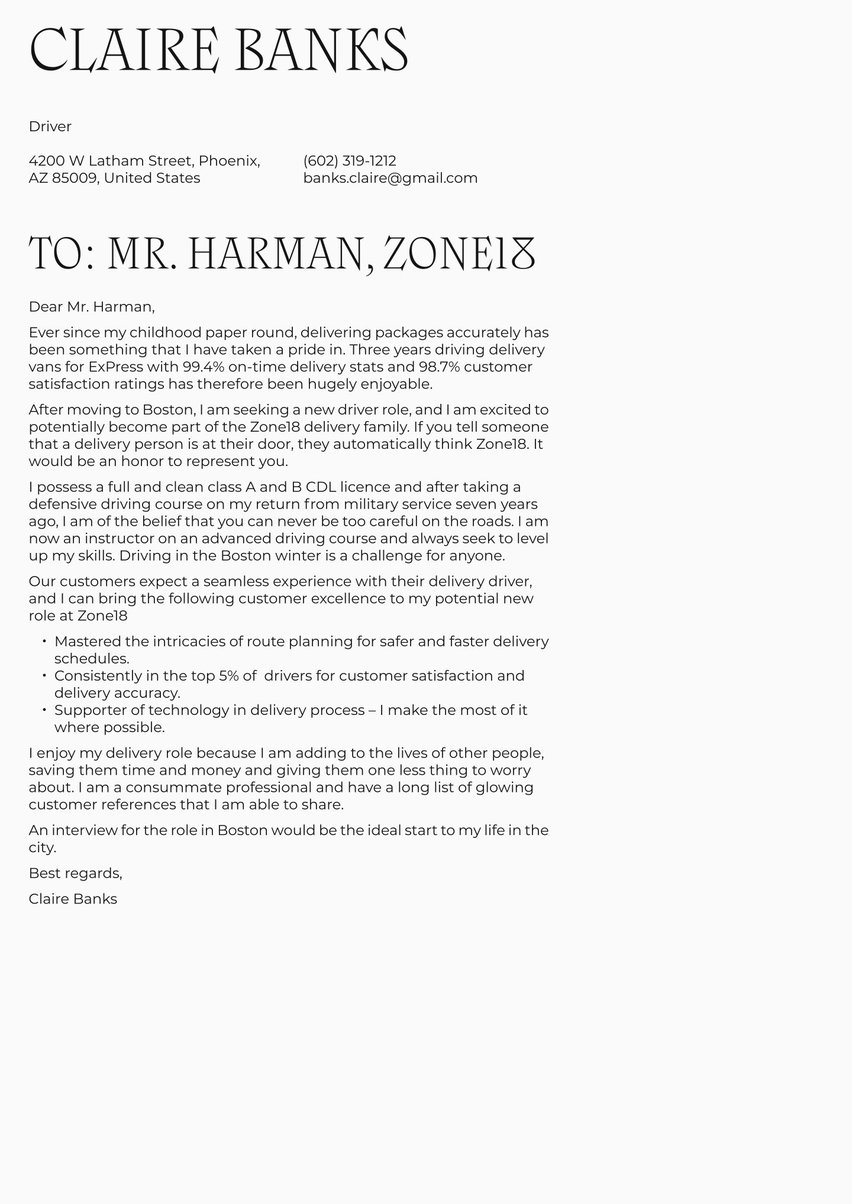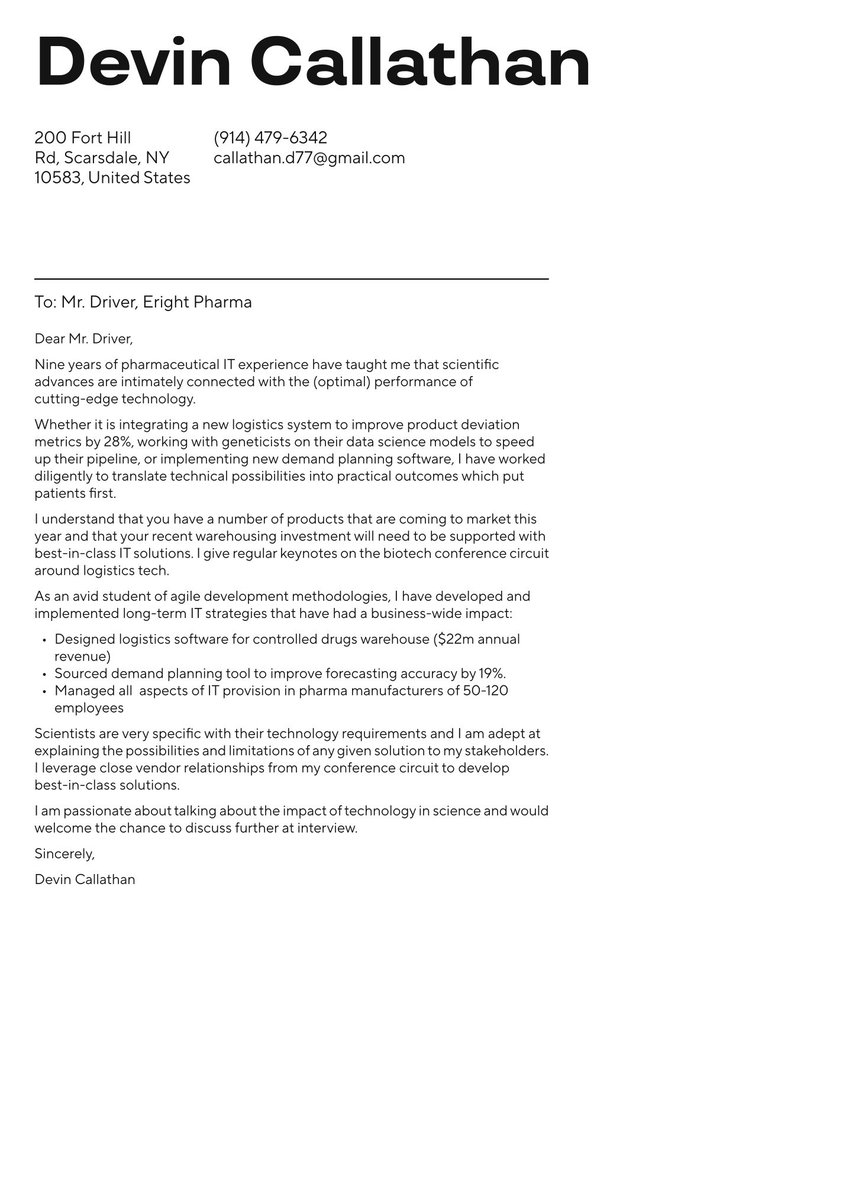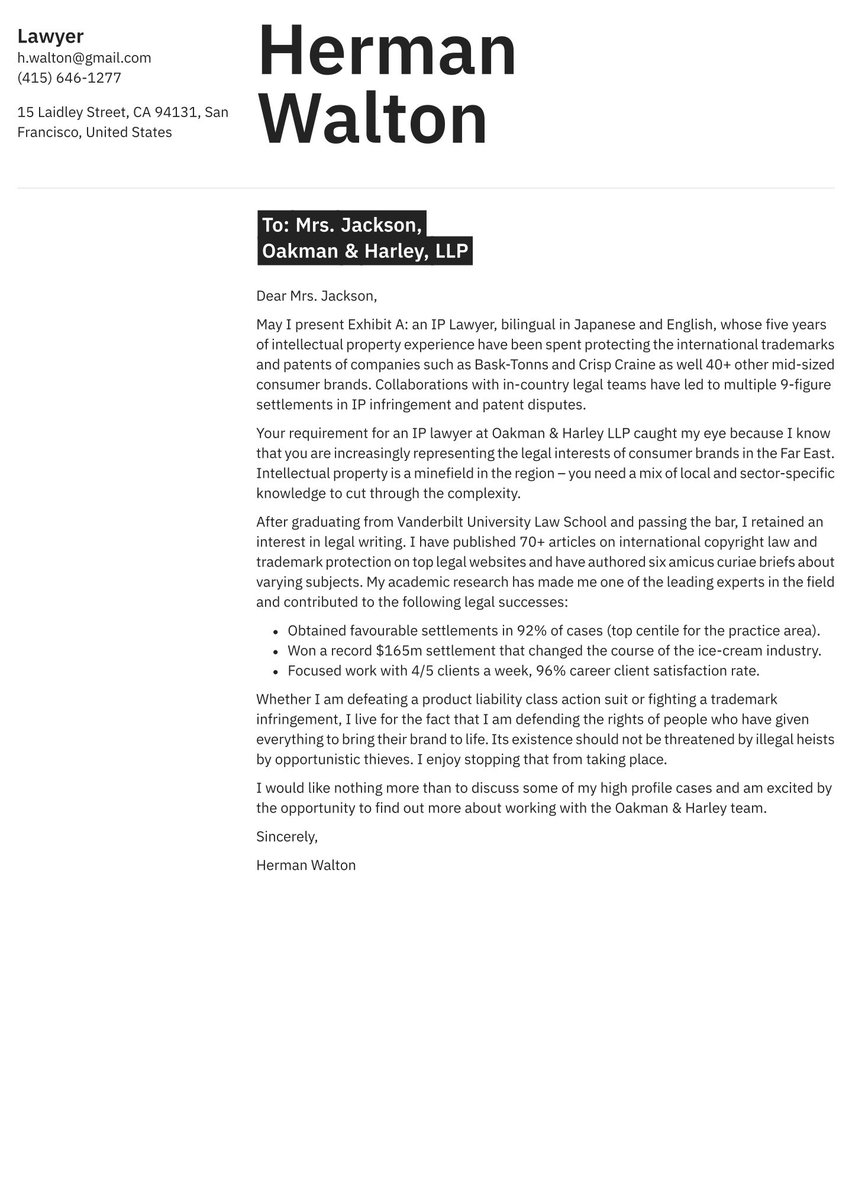When you are applying for an internal position, you might not think that you need a cover letter as everyone knows you, but as you will likely be going up against external applicants it is useful to submit a comparable cover letter and resume. Your internal position cover letter may blow the others out of the water, but you still need to make your case.
This cover letter example and guide will look at the essential aspects of writing an internal position cover letter. What should you emphasize when you are up against both internal and external applicants? Write it as if you would for any other job, but with enough insider advantages to give you the edge. Here is what we will cover:
- How to structure the internal position cover letter – what to include
- How to weave your story in the intro, middle part and conclusion
- Common mistakes to make – don’t fall into these traps
Resume.io shares over 180 cover letter examples and professional guides that offer tips and advice for job seekers. Our examples are relevant to any internal position in any industry. Just make it hyper company specific and the hiring manager will stick closer to home.
Best format for an internal position cover letter
The format of an internal position cover letter should not differ from a normal cover letter. You are not asking for special privileges because you are an internal applicant – you simply want to prove that you are the best person for the job. Therefore, the playing field should be level. The typical format should include:
- The cover letter header
- The greeting / salutation
- The cover letter intro
- The middle paragraphs (the body)
- The final paragraph of your cover letter
You should not only tell your current employment stories in your cover letter – there may well be previous experiences that could be useful for your new internal job. Mix it up. Your employers will know about your current accomplishments, but it may well be that your previous achievements add to your application more than you might think. You are applying for a new role, after all, so you need to think about all the new requirements.
Look at our comprehensive cover letter guide for more general advice on writing the cover letter – pick some of the functions that are closest to what you do.
The internal position cover letter samples below may offer some ideas.
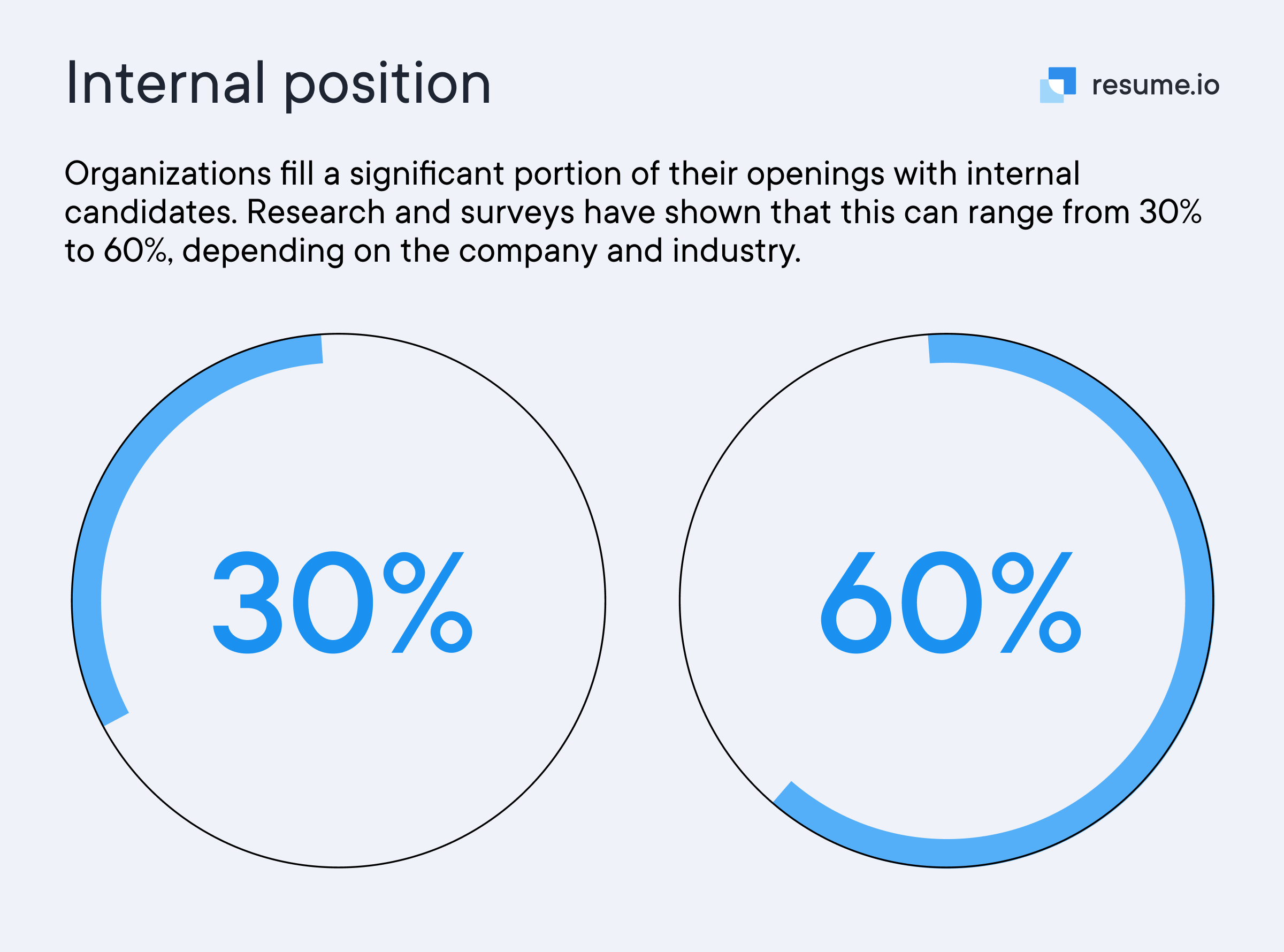
Cover letter header
The header of an internal position cover letter should be practical with a basic design. You do not need to impress your employer with formatting and visual tricks – they know you. You do, however, still need to include your full name, personal (not work) email address and your personal (not work) mobile number. It is important to ensure equality for all job applicants, so any attempt at currying favor should be avoided. You are just another applicant, but an applicant with an insane amount of relevant experience. See the cover letter header on our internal position cover letter example for more ideas.
Goal of the cover letter header: Include your contact details in the cover letter header as well as the resume. Keep work contact details off your internal position cover letter.
Cover letter greeting
There is no chance that you can get this section wrong. Some applicants may not know the identity of the hiring manager and wonder what they should write in the cover letter greeting, but for an internal position it is clear. Always stick with the more formal “Dear” rather than addressing the hiring manager by their first name, though. Your cover letter is still a formal employment document, so it should retain a certain sense of distance and respect. Check out the greeting from our cover letter example below.
Goal of letter greeting: Get the spelling right and use their surname rather than first name. The interview might be informal, but your internal position cover letter should not be.
Dear Ms. Tilling,
Cover letter introduction
The introduction should hit hard at the value that you will bring to your new role. Justify the move with your previous successes, but you will also likely have a host of new responsibilities so show that you possess other skills from previous roles and projects to ensure success. It is good if you can surprise the hiring manager: “Oh, I didn’t know that they had done that?!” Sharing your motivation for the move is an important consideration as starting a new position will not be easy and require significant efforts. See the introduction from our cover letter example below.
Goal of the cover letter introduction: Share why you fit the role, be hyper-specific if possible, and consider any core motivations for the new move.
I would like to apply for an internal position as department manager in Home Galore’s new Long Island location. I have been working at the Powlson store for the past five years (with two as homewares department manager) and would be interested in the new store as it is 50 minutes closer to my home.
Cover letter middle part (body)
The middle part, or body, of an internal position cover letter is where you need to share your most relevant examples. It doesn’t matter if they are from your current employer or a previous role – you simply need to prove that you are the best applicant. It does help to hint that you have insider knowledge and the associated benefits, but do not solely rely on this.
Share some personality with a hiring manager that might not know you so well and make sure that you drop a name or two in terms of people who know you well and can give a good character reference. Minimizing risk is important in recruitment, so if a hiring manager can have a chat about you to someone who knows you well, it will improve your chances. Below you’ll find the middle part of our cover letter sample.
Goal of the cover letter middle part: Show just how seamlessly you would fit in, share some previous experiences that might be unknown and offer a hint of personality.
I would enjoy the opportunity of working on a new store start-up and know a few of the new management team. Peter Harrison has told me to write a letter to signal my interest in the internal move and I also have the approval of my current boss Heather Witt. I have a track record in developing and training employees across all departments and realize that with 75 percent new employees, this would be an essential activity. Having a core of department managers with company experience is critical for success.
Taking on an internal position as department manager would also facilitate cooperation across local stores. I know the regional management teams well and would feel comfortable in leveraging diverse expertise from across the company. There are various merchandising challenges that need to be considered in such a big store and as the seasonal category comes under homewares, I have specific ideas of how we might run promotions. My summer seasonal sales were the best out of the entire company last year.
How to close a copywriter cover letter (conclusion and sign-off)
The close of a cover letter would normally be a call to action for an interview, but as an internal position applicant you know that this is guaranteed. It would therefore seem strange to say that you hope to get an interview, but not that you are looking forward to finding out more. The close of a cover letter is also a great chance to drop one more name who is sure to give you a glowing reference. You’ll find the conclusion of our cover letter sample below.
Goal of the conclusion: Close on a positive note and say that you are looking forward to the next steps. Ask your referee before you mention their name in the cover letter.
I would welcome the chance to meet the new management team and I understand that Heather Witt has already composed a letter of recommendation.
Sincerely,
Taylor Bartley
Mistakes to Avoid in an Internal Position Cover Letter
While the content of your internal position cover letter might make it clear that you are the right person for the role, there are a few mistakes that could crop up to derail your application. They are all quite basic, but don’t relax. Check and double check for accuracy.
- Grammatical and spelling errors: Typos and grammar errors are easily avoided by using an online checker such as Grammarly. Lack of attention to detail is a bad sign in most roles, so don’t rush the application assuming that the job is yours anyway.
- Use company where possible: While you might write other cover letters in a certain tone, adopt the language and tone that you would use in all internal correspondence. You don’t need to “seem” like one of the family, you are one of the family.
- Keep it formal: While most internal email correspondence may verge on the informal side, the application could be viewed by any number of senior management, so keep the register formal. Your language will always be compared to external applicants.
An attractive and well-organized cover letter helps the hiring manager see you as the most promising choice. If you don’t have time to fuss with the formatting, consider using a professionally-designed cover letter template.
Key takeaways
- Apply to an internal position like you would any other role
- Follow the job description carefully – include information from past roles
- Speak the language of your company, but keep it on the formal side
- Drop names of internal people who are happy to put in a good word for you
Check out our other related cover letter examples for even more writing and formatting tips:


